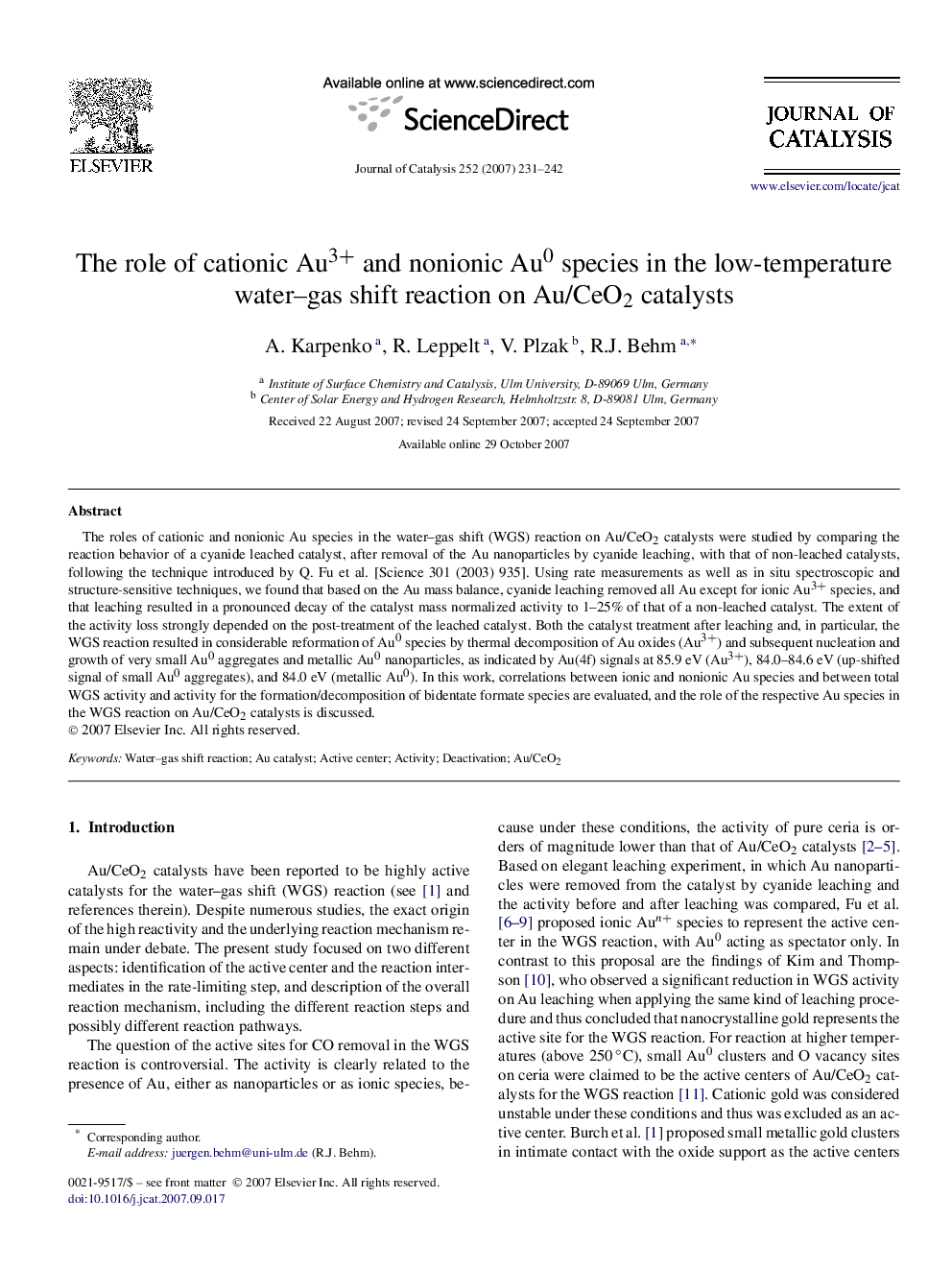| Article ID | Journal | Published Year | Pages | File Type |
|---|---|---|---|---|
| 62403 | Journal of Catalysis | 2007 | 12 Pages |
The roles of cationic and nonionic Au species in the water–gas shift (WGS) reaction on Au/CeO2 catalysts were studied by comparing the reaction behavior of a cyanide leached catalyst, after removal of the Au nanoparticles by cyanide leaching, with that of non-leached catalysts, following the technique introduced by Q. Fu et al. [Science 301 (2003) 935]. Using rate measurements as well as in situ spectroscopic and structure-sensitive techniques, we found that based on the Au mass balance, cyanide leaching removed all Au except for ionic Au3+ species, and that leaching resulted in a pronounced decay of the catalyst mass normalized activity to 1–25% of that of a non-leached catalyst. The extent of the activity loss strongly depended on the post-treatment of the leached catalyst. Both the catalyst treatment after leaching and, in particular, the WGS reaction resulted in considerable reformation of Au0 species by thermal decomposition of Au oxides (Au3+) and subsequent nucleation and growth of very small Au0 aggregates and metallic Au0 nanoparticles, as indicated by Au(4f) signals at 85.9 eV (Au3+), 84.0–84.6 eV (up-shifted signal of small Au0 aggregates), and 84.0 eV (metallic Au0). In this work, correlations between ionic and nonionic Au species and between total WGS activity and activity for the formation/decomposition of bidentate formate species are evaluated, and the role of the respective Au species in the WGS reaction on Au/CeO2 catalysts is discussed.
